Melbourne, the bustling city located in the southern state of Victoria, is surprisingly home to a diverse range of bird species. With its many parks, national reserves, and natural habitats, it’s no wonder that Melbourne offers a wide variety of habitats for birds.
From the stunning Australian parrots to the majestic eagles soaring through the skies, bird enthusiasts are sure to be delighted by the vibrant birdlife found in Melbourne.
The city boasts a range of habitats, including marshland, grasslands, and waterholes, allowing for a unique and diverse bird population.
Whether you are a seasoned birder or a casual observer, Melbourne offers a unique opportunity to glimpse some of Australia’s most captivating bird species.
1. Superb Fairywren
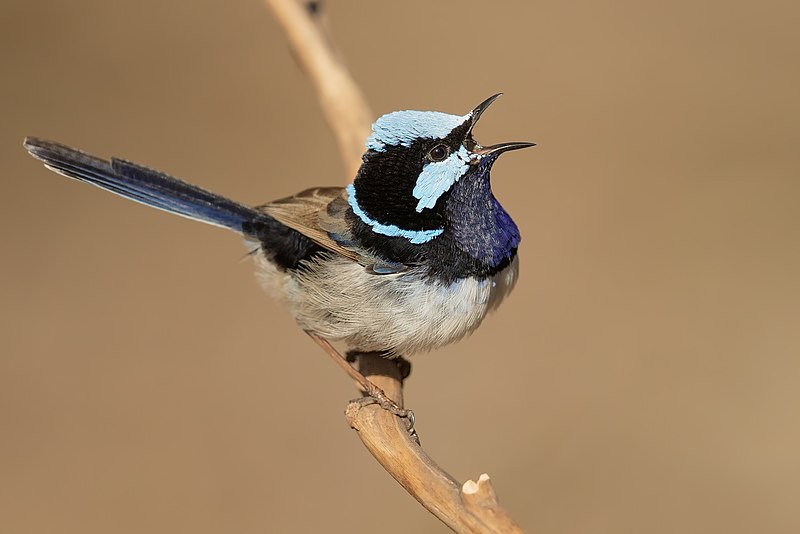
The Superb Fairywren is a beautiful and unique bird native to southeastern Australia.
The male in breeding plumage has an impressive bright blue forehead, ear coverts, mantle and tail with a black mask and either black or dark blue throat.
They are sedentary birds that form strong territorial bonds with their mates; the males staying close-by while the females build nests away from them.
These birds exhibit high sexual dimorphism; making it easy for us to distinguish between males and females of this species.
Their diet consists primarily of insects although they will also feed on other invertebrates as well as nectar, fruit and seeds when available.
This small passerine bird is sure to bring any garden alive with its vibrant colours.
Scientific classification:
| Kingdom | Animalia |
| Phylum | Chordata |
| Class | Aves |
| Order | Passeriformes |
| Family | Maluridae |
| Genus | Malurus |
| Species | M. cyaneus |
Also Featured In: Most common birds in Australia,
2. Crimson Rosella
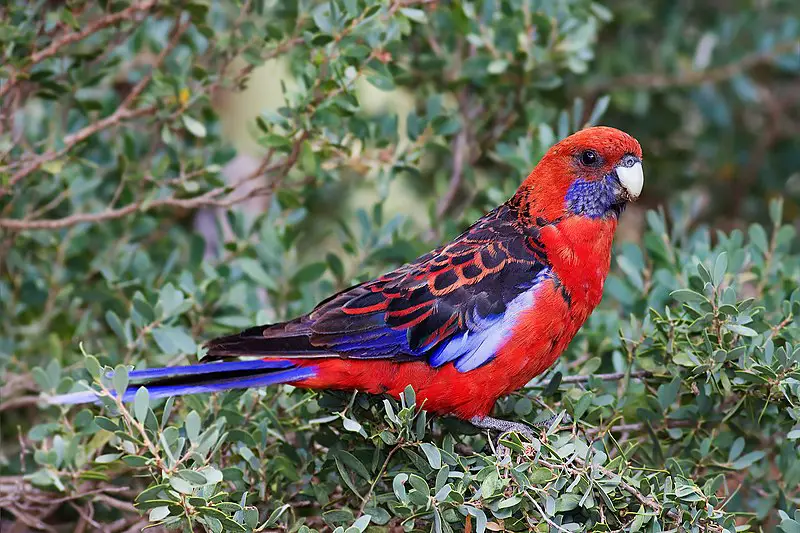
The Crimson Rosella is a beautiful parrot native to eastern and south eastern Australia which has been introduced to New Zealand and Norfolk Island.
It lives in mountain forests, gardens, woodlands or other open habitats such as farmland with trees.
This species was created when two separate species- the Yellow Rosella and Adelaide Rosella were combined together due to molecular studies showing them being closely related.
The Crimson Rosellas have bright red feathers on their wings and back with blue cheeks, forehead & tail while its underbelly is yellowish orange in colour.
They also have black bars across each wing & white patches near their tails making them an attractive sight for bird watchers.
Scientific classification:
| Kingdom | Animalia |
| Phylum | Chordata |
| Class | Aves |
| Order | Psittaciformes |
| Family | Psittaculidae |
| Genus | Platycercus |
| Species | P. elegans |
3. Silvereye
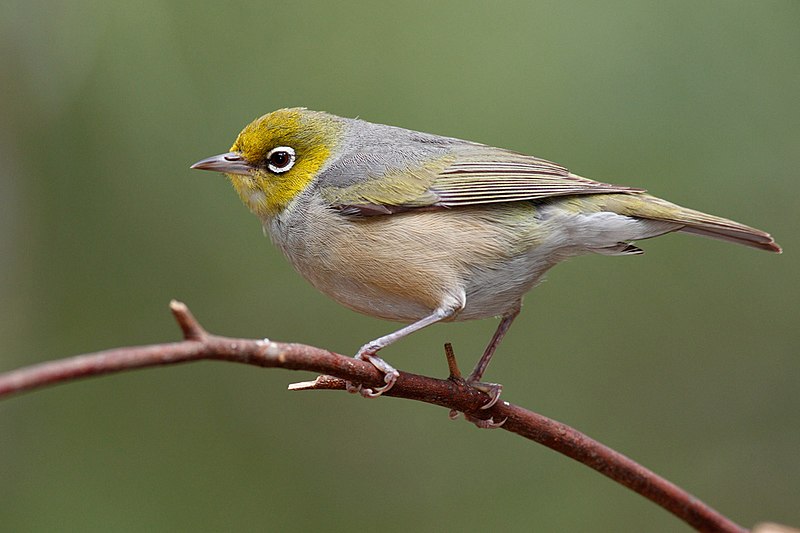
The silvereye, also known as wax-eye, is a tiny passerine bird native to the south-west Pacific region. It was first recorded in New Zealand in 1832 and there were greater numbers by 1856.
These birds are omnivorous feeders that make their home in open woodlands or gardens with lush vegetation.
Their plumage has greyish tones on top of its head and wings giving it a silver sheen look which inspired its common name ‘silvereye’.
The underside of these birds have white feathers allowing for camouflage among foliage when they fly low over shrubs and trees seeking food such as nectar, insects and fruit.
They are social creatures who often flock together to share meals while communicating through their unique chirps.
Scientific classification:
| Kingdom | Animalia |
| Phylum | Chordata |
| Class | Aves |
| Order | Passeriformes |
| Family | Zosteropidae |
| Genus | Zosterops |
| Species | Z. lateralis |
Also Featured In: New Zealand Birds, Silver Birds You Should Know
4. Cape Barren Goose
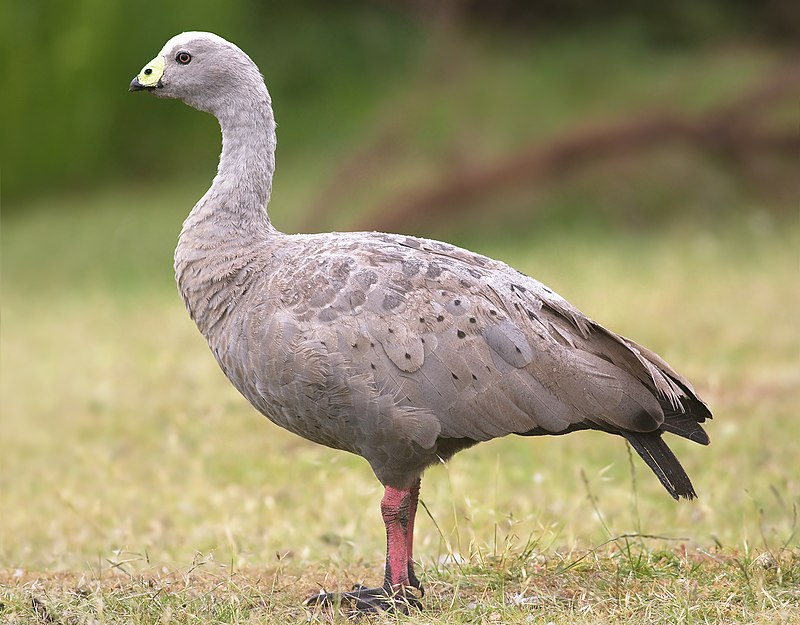
The Cape Barren goose is a large species of bird native to southern Australia. Its name derives from the Cape Barren Island, where it was first sighted by European explorers in 1801.
This goose belongs to the Jardwadjali language and is known as toolka there. It has an eye-catching plumage with greyish-brown feathers on its body and wings, while its head appears black or brownish.
The neck sports white stripes which look like arrowheads when seen up close, adding beauty to this majestic looking creature.
They feed mainly on grasses but also consume other vegetation such as seaweed and eelgrass during their migration season in summertime.
These geese are gregarious birds that live together in flocks for protection against predators.
To conclude, these magnificent creatures can be found all across southern Australian regions – making them truly one of nature’s wonders.
Scientific classification:
| Kingdom | Animalia |
| Phylum | Chordata |
| Class | Aves |
| Order | Anseriformes |
| Family | Anatidae |
| Subfamily | Anserinae |
| Genus | Cereopsis Latham, 1801 |
| Species | C. novaehollandiae |
5. Dusky Moorhen
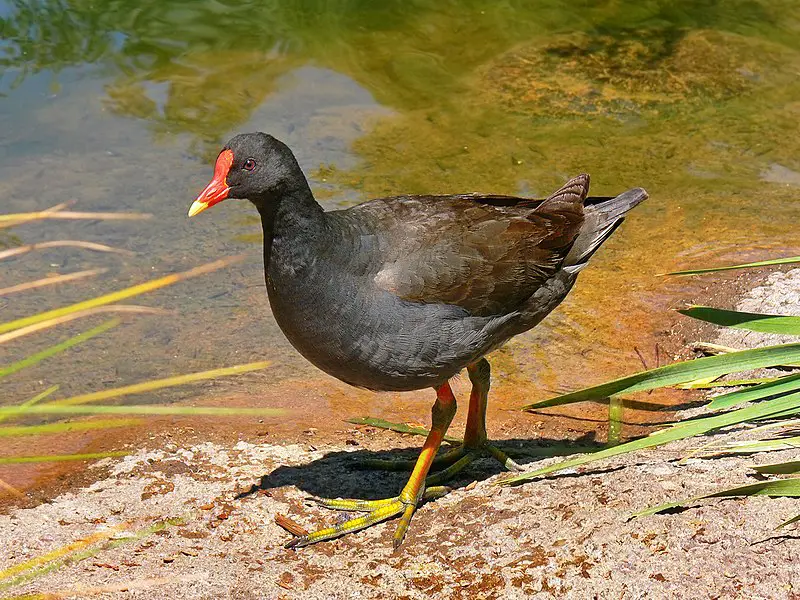
The dusky moorhen is a species of bird found in India, Australia, New Guinea, Borneo and Indonesia. It has dark plumage with an iridescent green sheen on its back and wings.
Its beak and legs are yellow-orange in color. The tail is long and pointed. Dusky moorhens live around freshwater wetlands such as swamps or ponds where they feed largely on aquatic vegetation but may also eat small insects or fish if available.
They often live alongside other birds from the same genus like purple swamphens or Eurasian coots which have similar appearances but different habitats preferences than their own species’.
Although timid when approached by humans these birds still make fascinating subjects for observation due to their unique behaviors within family groups that can help us understand more about them.
Scientific classification:
| Kingdom | Animalia |
| Phylum | Chordata |
| Class | Aves |
| Order | Gruiformes |
| Family | Rallidae |
| Genus | Gallinula |
| Species | G. tenebrosa |
Also Featured In: Timor-Leste birds, Birds that Live Near Adelaide
6. Silver Gull
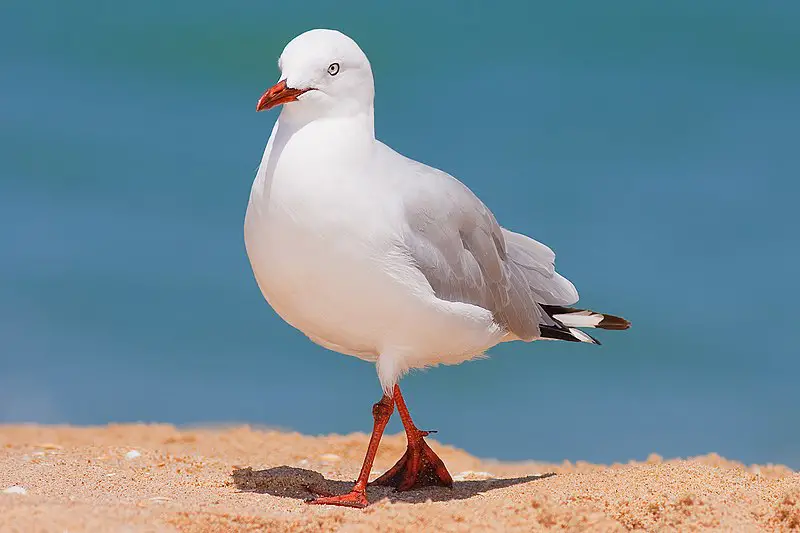
The Silver Gull is a common sight in Australia, especially along the coastlines. It’s smaller than the Pacific Gull and has silver-grey wings with white head and underparts.
Its scientific name is Chroicocephalus novaehollandiae, but it shouldn’t be confused with the Herring Gull which is also called “Silver Gull” in many other languages (Larus argentatus).
During summer months these birds can often be seen around fishing boats scavenging for discarded food or flying low over city parks looking for handouts from humans.
They are highly adaptable to their environment making them quite successful at coexisting near human populations.
These Australian seabirds have been known to live up to 25 years old.
Scientific classification:
| Kingdom | Animalia |
| Phylum | Chordata |
| Class | Aves |
| Order | Charadriiformes |
| Family | Laridae |
| Genus | Chroicocephalus |
| Species | C. novaehollandiae |
Also Featured In: Gulls Species, Birds that Live around Brisbane
7. Nankeen Night Heron
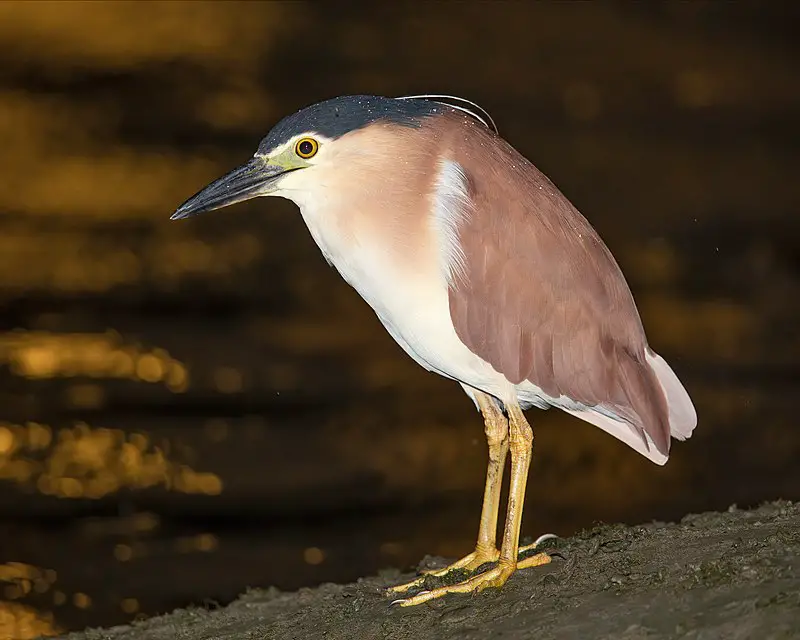
The Nankeen night heron is a beautiful bird with its distinct reddish-brown colour. It can be found in an impressive range of habitats, including forests, meadows, shores and swamps.
Primarily nocturnal by nature, these birds are most active during the dark hours of the day.
Measuring between 55 to 65 cm long they have broad wings which help them soar through the air gracefully at great speeds when hunting for food or migrating across continents.
Their diet primarily consists of small fish and other aquatic creatures that live in lakes or rivers near their homes.
For many people living near water sources like ponds or streams this species has become a familiar sight as it often comes out to feed on insects at dusk.
Scientific classification:
| Kingdom | Animalia |
| Phylum | Chordata |
| Class | Aves |
| Order | Pelecaniformes |
| Family | Ardeidae |
| Genus | Nycticorax |
| Species | N. caledonicus |
Also Featured In: Herons Species, Birds that Live around Victoria
8. Australian Pied Cormorant
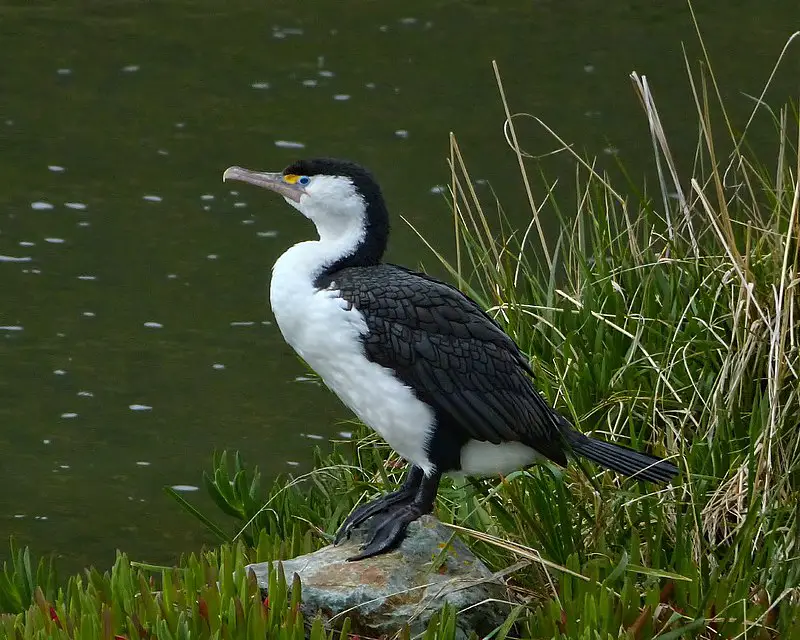
The Australian pied cormorant is a medium-sized member of the cormorant family and can be found around the coasts of Australasia.
It’s distinctive plumage features black feathers on its head, back, wings and tail with some white patches in between.
Its face has yellow skin that becomes bright orange when breeding season begins. The bird uses it’s webbed feet to swim through water searching for food such as fish or small crustaceans which make up most of their diet.
They often hunt by diving underwater from where they can stay submerged for about 30 seconds before resurfacing again for air.
During these dives they are able to travel depths up to 15 meters down.
This species also forms colonies when mating season comes around and will nest together in tall trees near shorelines or other bodies of water so that fishing is easier within reach during this time period every year.
Scientific classification:
| Kingdom | Animalia |
| Phylum | Chordata |
| Class | Aves |
| Order | Suliformes |
| Family | Phalacrocoracidae |
| Genus | Phalacrocorax |
| Species | P. varius |
Also Featured In: Cormorant Species, South Australian Birds
9. Pied Currawong
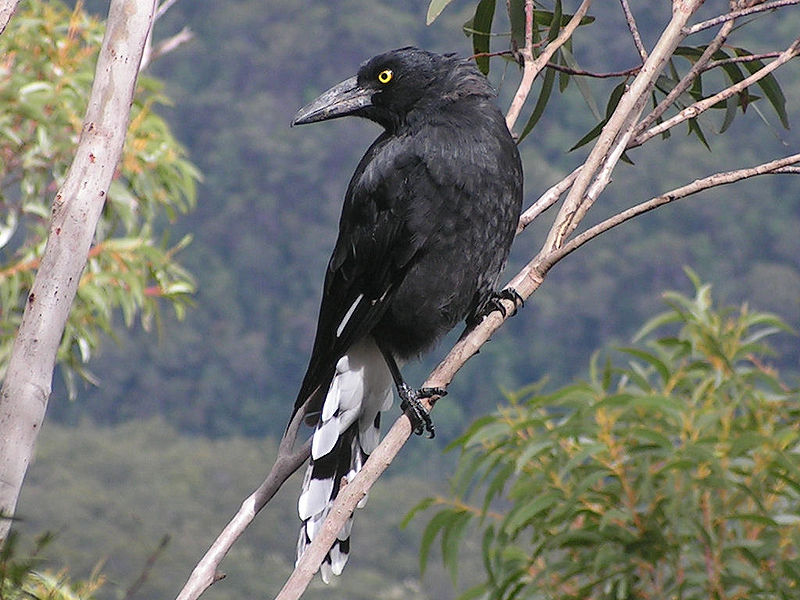
The Pied currawong is a black passerine bird found in eastern Australia and Lord Howe Island. It is closely related to the butcherbirds and Australian magpie.
This crow-like bird is about 48 cm long and has black or sooty grey-black plumage. It is a robust bird and has six recognized subspecies.
Scientific classification:
| Kingdom | Animalia |
| Phylum | Chordata |
| Class | Aves |
| Order | Passeriformes |
| Family | Artamidae |
| Genus | Strepera |
| Species | S. graculina |
Also Featured In: Sydney Birds You Need to See,
10. Powerful Owl
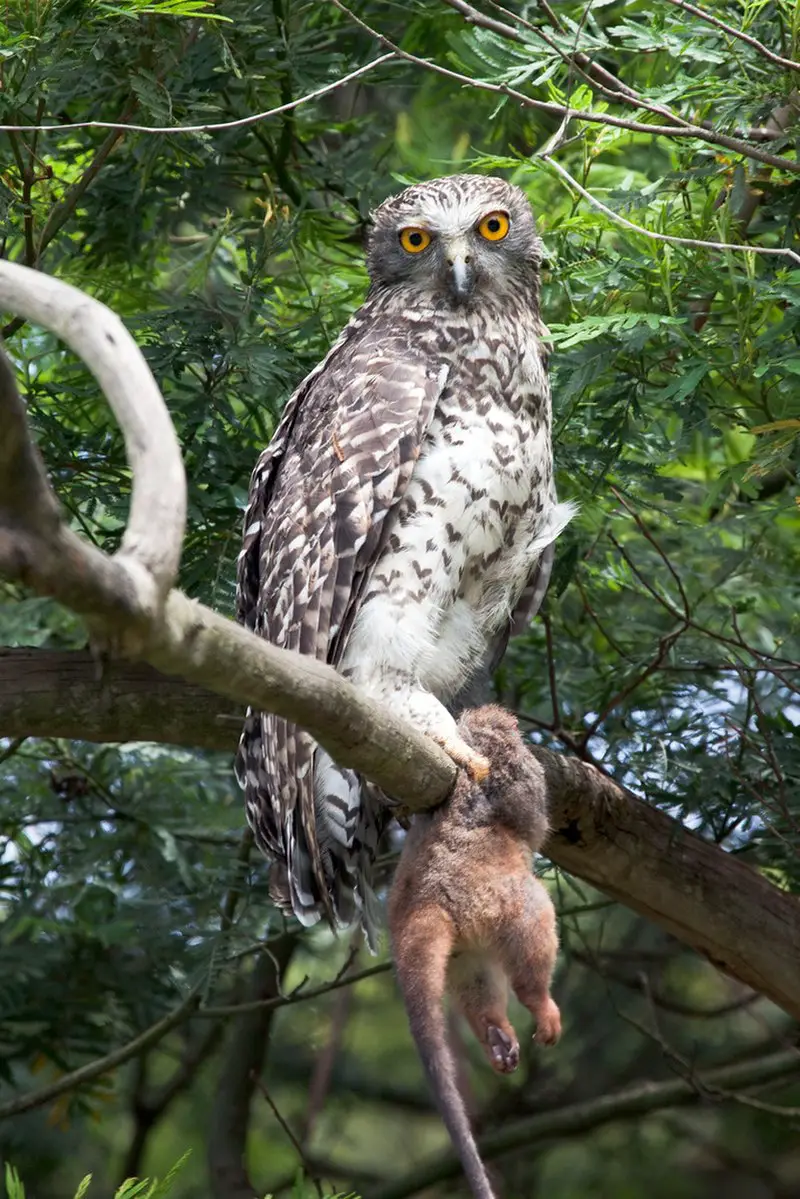
The Powerful Owl, also known as the Powerful Boobook, is the largest owl species in Australia. It can be found in both coastal areas and the Great Dividing Range, though it is rarely found more than 120 miles inland.
These owls are apex predators in their region, hunting a variety of prey. Due to habitat loss, they are listed as a species of concern.
Despite this, they are still able to thrive in some urban areas as long as there is a stable food source available.
With their striking appearance and powerful talons, the Powerful Owl is a magnificent bird and an important part of the Australian ecosystem.
Scientific classification:
| Kingdom | Animalia |
| Phylum | Chordata |
| Class | Aves |
| Order | Strigiformes |
| Family | Strigidae |
| Genus | Ninox |
| Species | N. strenua |
Also Featured In: Queensland Birds You Should Know, Birds that Live in Gold Coasts
11. Australian White Ibis
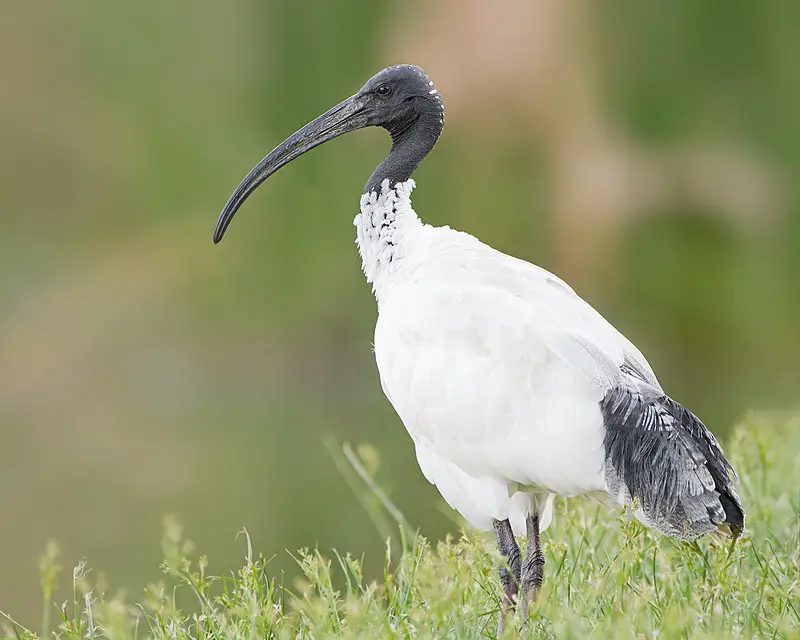
The Australian white ibis is a native wading bird of Australia. With its predominantly white plumage and long downcurved bill, it is easily recognized.
The bird is often found foraging for food on open grasslands, pastures and urban areas such as parks and gardens.
Despite being closely related to the African sacred ibis, the Australian white ibis is a separate species. It has a bare, black head and black legs.
The bird is well adapted to urban environments and often scavenges for food from waste bins or on streets.
While it has been subjected to negative perceptions due to its scavenging behavior, it remains an important member of the Australian ecosystem.
Scientific classification:
| Kingdom | Animalia |
| Phylum | Chordata |
| Class | Aves |
| Order | Pelecaniformes |
| Family | Threskiornithidae |
| Genus | Threskiornis |
| Species | T. molucca |
Also Featured In: Water Birds Live around Us, Most Common Western Australia Birds
12. Australasian Grebe
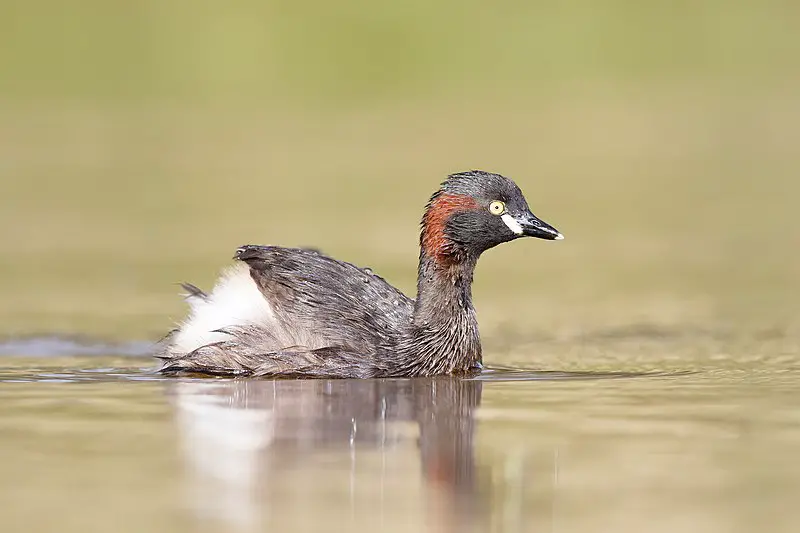
The Australasian grebe is a small waterbird that is frequently seen on fresh water lakes and rivers in Australia, New Zealand, and the Pacific islands. It is one of the smallest members of the grebe family, measuring only 25-27 cm in length.
The bird has a dark brown upper body and a glossy-black head and neck, making it quite striking in appearance.
Both male and female Australasian grebes look alike, and the species is known for its strong swimming and diving abilities.
Due to its reliance on freshwater ecosystems, the Australasian grebe is highly vulnerable to habitat loss and other environmental threats.
Conservation efforts are underway to protect this unique and important bird species.
Scientific classification:
| Kingdom | Animalia |
| Phylum | Chordata |
| Class | Aves |
| Order | Podicipediformes |
| Family | Podicipedidae |
| Genus | Tachybaptus |
| Species | T. novaehollandiae |
Also Featured In: Birds of Tasmania, Birds that You’ll find in Perth
13. Black-Faced Cuckooshrike
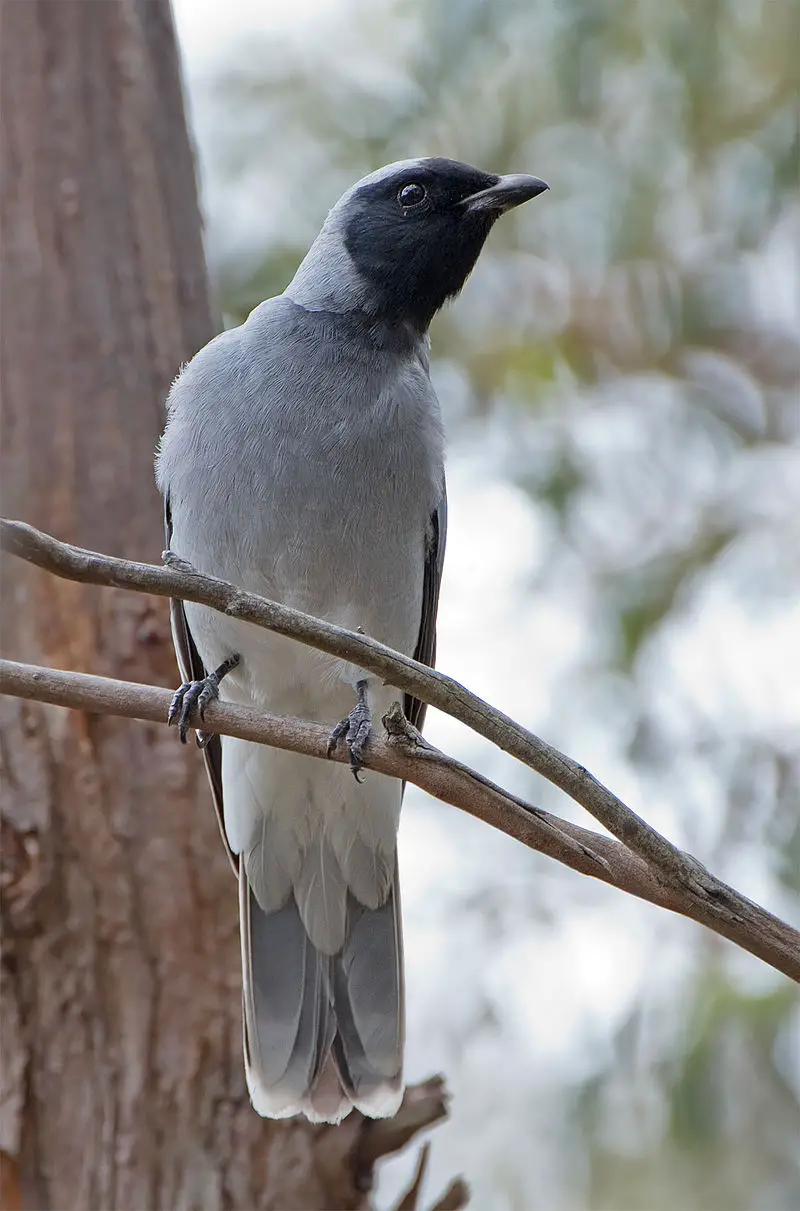
The Black-faced cuckooshrike, found in Australia and southern New Guinea, is a protected species under Australian law.
These birds are omnivorous and commonly seen in wooded habitats, with the exception of rainforests.
Despite this, they are also sometimes found in urban areas. The Black-faced cuckooshrike is a passerine bird and is known for its distinctive black facial markings.
Scientific classification:
| Kingdom | Animalia |
| Phylum | Chordata |
| Class | Aves |
| Order | Passeriformes |
| Family | Campephagidae |
| Genus | Coracina |
| Species | C. novaehollandiae |
Also Featured In: New South Wales Birds You Need to See, Common Flinders Island Birds
14. White-Plumed Honeyeater
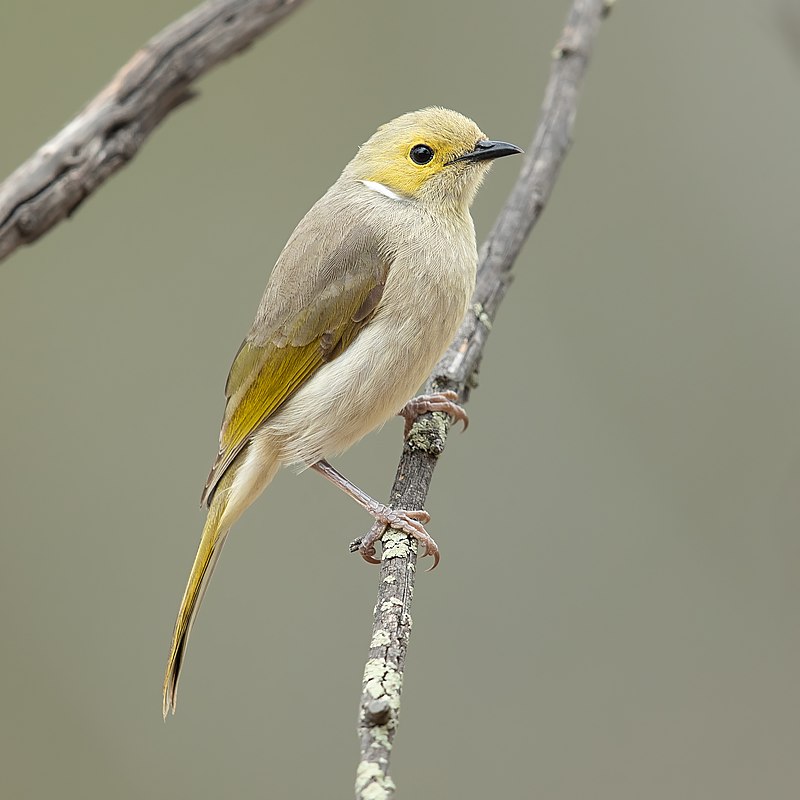
The White-plumed honeyeater is a tiny bird species found only in Australia. It is most commonly found around water sources and can often be seen in suburban areas with enough vegetation cover.
The bird was first identified in 1837 by English naturalist John Gould, who examined a specimen from the interior of New South Wales. The bird is known for its distinct white plumes that adorn its head and give it its name.
Despite its small size, the White-plumed honeyeater is widely spread and common in its native habitat.
Scientific classification:
| Kingdom | Animalia |
| Phylum | Chordata |
| Class | Aves |
| Order | Passeriformes |
| Family | Meliphagidae |
| Genus | Ptilotula |
| Species | P. penicillata |
15. Little Penguin
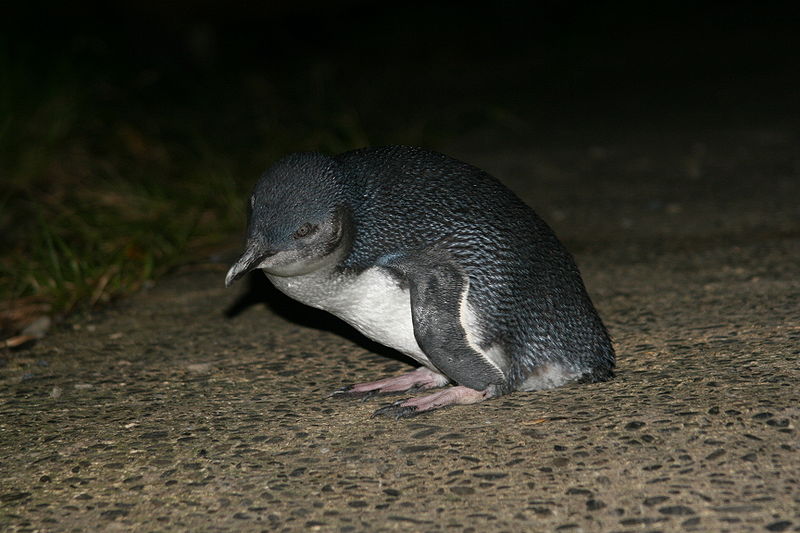
The Little Penguin, also known as the Blue Penguin or Kororā in Māori, is a type of penguin found in New Zealand. With its distinctive slate-blue plumage, it is a beloved symbol of the island nation’s wildlife.
The Little Penguin is a small bird that stands no taller than 40cm and weighs a mere 1kg, making it the smallest species of penguin in the world.
It can be found in many coastal and offshore areas around New Zealand, and is also known to frequent parts of Australia.
In fact, there is such a strong connection between New Zealand and this dapper little bird that it is often used as the mascot for local sports teams and other cultural events.
Despite its diminutive size, the Little Penguin is a tough survivor that has adapted well to the challenges of life in the wild.
Scientific classification:
| Kingdom | Animalia |
| Phylum | Chordata |
| Class | Aves |
| Order | Sphenisciformes |
| Family | Spheniscidae |
| Genus | Eudyptula |
| Species | E. minor |
Also Featured In: Birds You’ll Find in Night, Most Common Birds in Oceania
16. Red Wattlebird
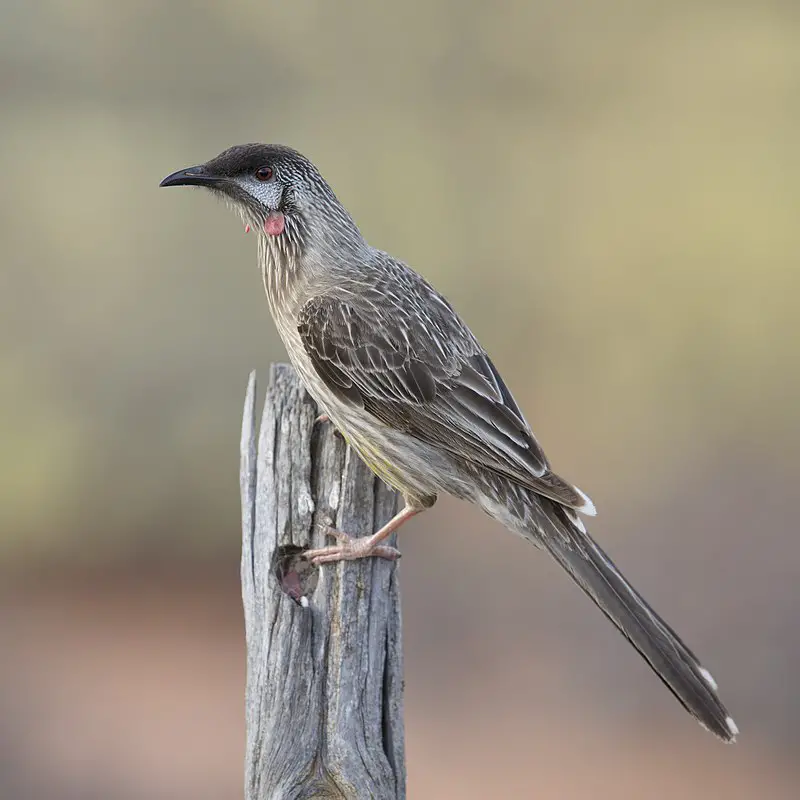
The Red Wattlebird is a large honeyeater found in southern Australia. It has grey-brown feathers, red eyes, and pinkish-red wattles on its neck.
The bird also has white streaks on its chest and a bright yellow patch on its belly.
It measures 33-37 cm in length, making it the second largest Australian honeyeater. The male and female birds have similar physical characteristics.
Scientific classification:
| Kingdom | Animalia |
| Phylum | Chordata |
| Class | Aves |
| Order | Passeriformes |
| Family | Meliphagidae |
| Genus | Anthochaera |
| Species | A. carunculata |
17. Brown Thornbill
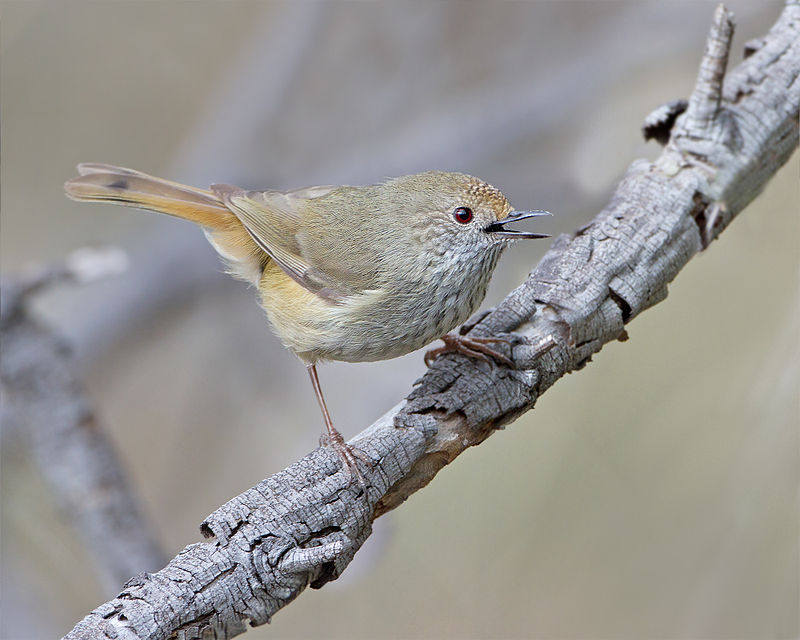
The Brown thornbill is a small bird native to eastern and south-eastern Australia, including Tasmania. With a maximum length of 10 cm, the bird is predominantly brown, gray, and white in appearance.
It belongs to the order Passeriformes and the family Acanthizidae, with the species consisting of five different subspecies. The bird’s diet mainly includes insects.
Its habitat includes various forest types, woodlands, and heaths, where it prefers to inhabit the lower layers of vegetation.
The Brown thornbill is known to be a skillful forager, and it generally feeds on insects found on the bark and leaves of trees.
The bird’s beautiful plumage and melodious chirping make it a popular species amongst birdwatchers and nature enthusiasts.
Scientific classification:
| Kingdom | Animalia |
| Phylum | Chordata |
| Class | Aves |
| Order | Passeriformes |
| Family | Acanthizidae |
| Genus | Acanthiza |
| Species | A. pusilla |
Also Featured In: Small Birds that Live in New South Wales, Birds that Live in Kangaroo Island
18. Bell Miner
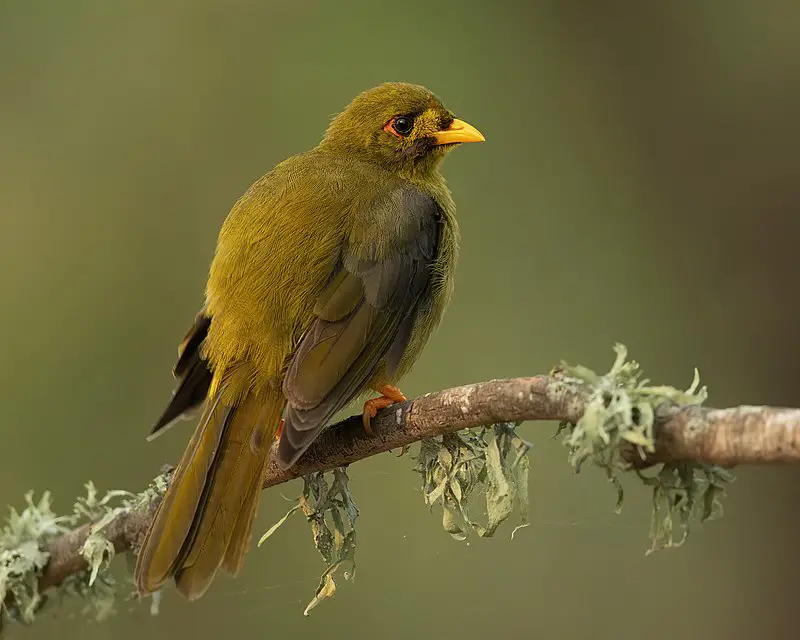
The Bell Miner bird, also known as the Bellbird, is found only in southeast Australia. Its name comes from the bell-like sound it produces. They are colonial honeyeaters that live in groups.
These birds mainly feed on the bell lerps of particular psyllid insects. The bell lerps are dome-like coverings that the psyllids create as a type of defense mechanism.
The Bell Miner bird is a member of the Manorina genus, and ‘miner’ is an old spelling of ‘myna’.
These birds are prevalent in eucalypt forests and woodlands, where they build cup-shaped nests.
Despite their small size, they play an important role in the ecosystem by contributing to the health of the forest.
Scientific classification:
| Kingdom | Animalia |
| Phylum | Chordata |
| Class | Aves |
| Order | Passeriformes |
| Family | Meliphagidae |
| Genus | Manorina |
| Species | M. melanophrys |
19. Little Wattlebird
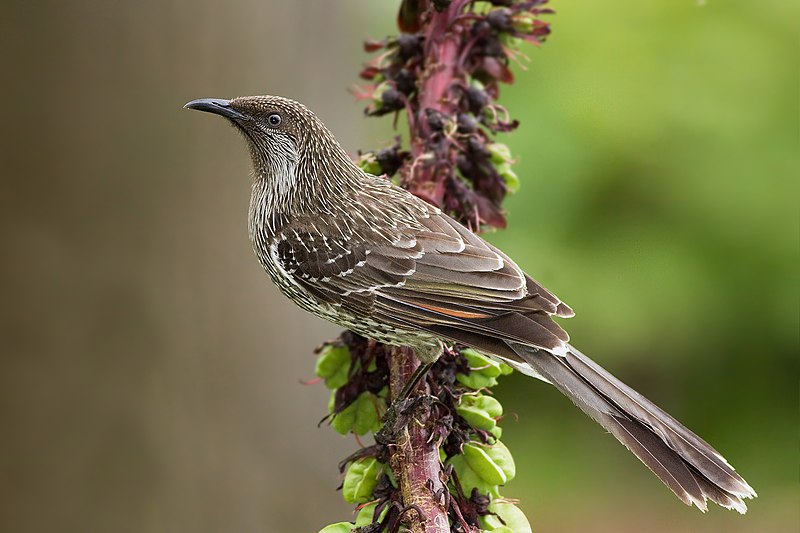
The Little Wattlebird, commonly known as the brush wattlebird, belongs to the Meliphagidae family of passerine birds.
These birds are primarily found in coastal and sub-coastal southeastern Australia.
Ornithologist John Latham described the species for the first time in 1801, under the name Merops chrysoptera.
Today, the Little Wattlebird is categorized under the Anthochaera genus. Although small, these birds possess a distinct wattled appearance and a brush-like tail.
Little Wattlebirds are known for their complex songs, consisting of various clicks, whistles, and harsh calls.
They feed on insects, nectar, fruit, and pollen, using their long, curved beaks to extract nectar.
These birds are known to be territorial and active communicators, making them a fascinating species to observe in their natural habitat.
Scientific classification:
| Kingdom | Animalia |
| Phylum | Chordata |
| Class | Aves |
| Order | Passeriformes |
| Family | Meliphagidae |
| Genus | Anthochaera |
| Species | A. chrysoptera |
20. Musk Lorikeet
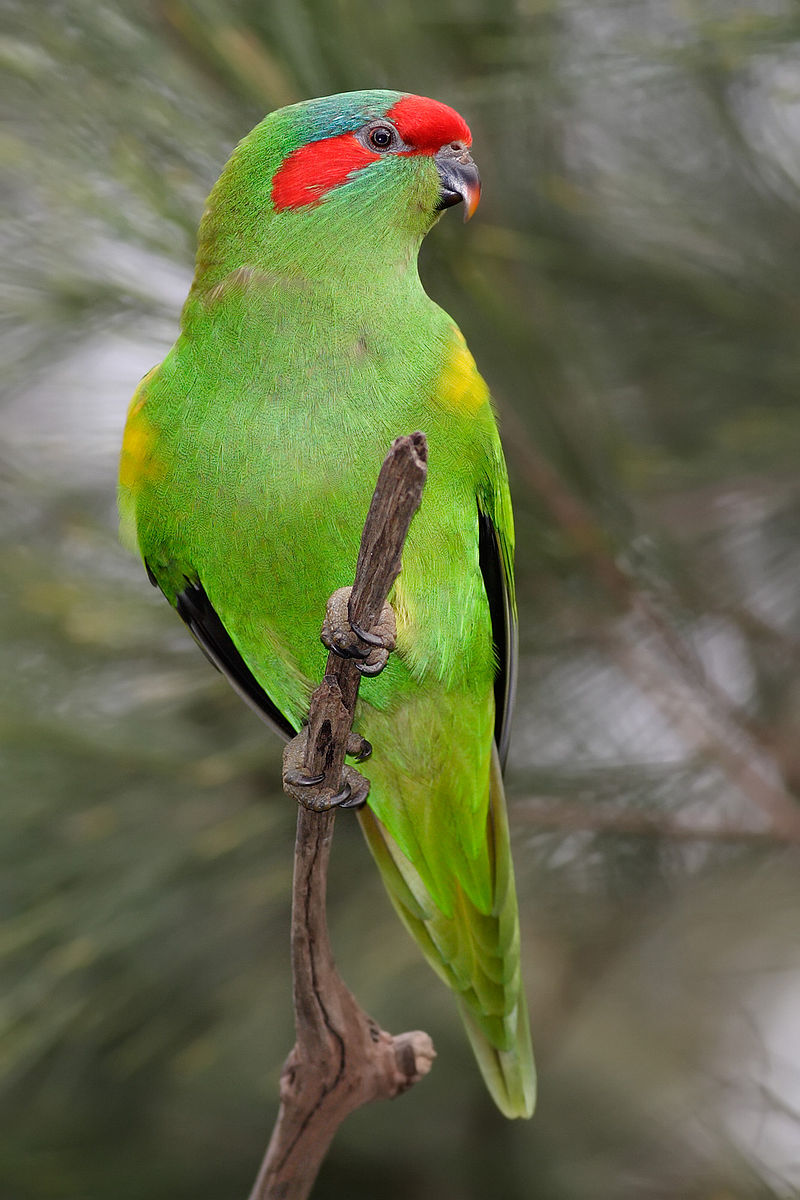
The musk lorikeet is a species of lorikeet found in south-central and eastern Australia. It is the only species in the genus Glossopsitta. The little lorikeet and purple-crowned lorikeet were once classified in the same genus.
First described by ornithologist George Shaw in 1790, the musk lorikeet resides in the Port Jackson vicinity.
It is a small bird with a distinct green plumage and a red face, as well as a pointed tail. Its diet consists mainly of nectar and pollen.
The species is known for its distinct call, which can be heard in flight or when the birds are gathered together.
The musk lorikeet tends to form large communal groups and can often be seen flying in flocks.
Scientific classification:
| Kingdom | Animalia |
| Phylum | Chordata |
| Class | Aves |
| Order | Psittaciformes |
| Family | Psittaculidae |
| Tribe | Loriini |
| Genus | Glossopsitta Bonaparte, 1854 |
| Species | G. concinna |
21. Eastern Yellow Robin
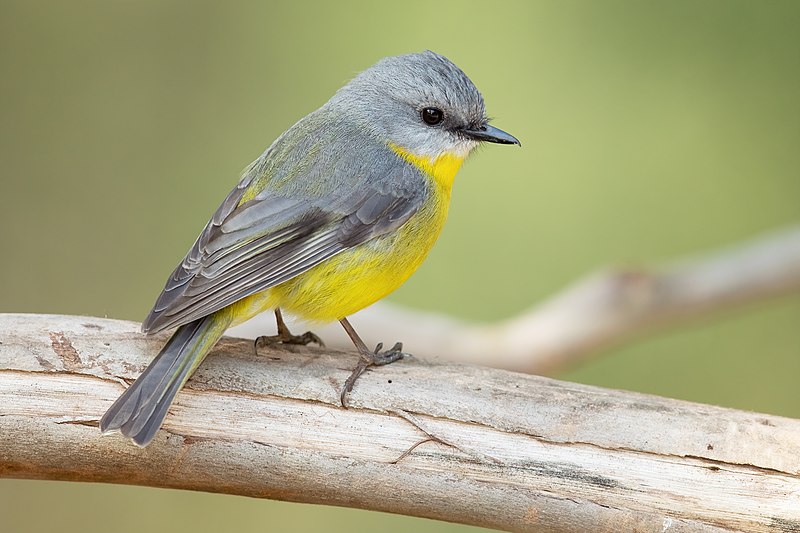
The Eastern yellow robin is a native bird found in coastal and sub-coastal regions of eastern Australia.
With a range extending from South Australia to as far north as Cooktown in Queensland, these birds prefer to live in warm forest areas.
Their bright yellow breast makes them easily recognizable, while their small size and chirpy songs make them a popular sight among birdwatchers.
Eastern yellow robins are known for their friendly nature, often coming very close to humans without fear.
These curious birds are also skilled hunters, preying upon insects and small invertebrates.
In summary, the Eastern yellow robin is a charming bird found in the forests and woodlands of eastern Australia.
Scientific classification:
| Kingdom | Animalia |
| Phylum | Chordata |
| Class | Aves |
| Order | Passeriformes |
| Family | Petroicidae |
| Genus | Eopsaltria |
| Species | E. australis |
Also Featured In: Birds that Live in Sunshine Coast,
22. Grey Currawong
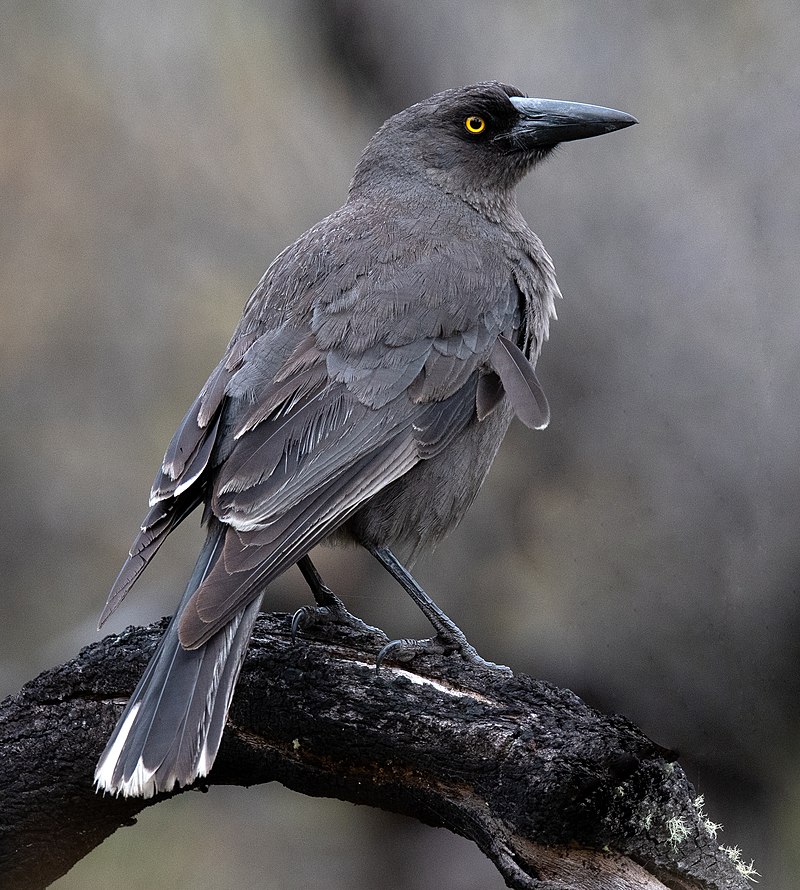
The Grey currawong is a bird that belongs to the Strepera genus and is widely found in southern Australia, along with Tasmania.
This sizeable passerine bird, measuring an average of 48 cm, is similar to a crow with a heavy bill, dark plumage, and a white undertail.
Interestingly, this bird has yellow irises that further enhance its striking appearance.
The Grey currawong is one of the three currawong species and has close relations with the Australian magpie and butcherbirds belonging to the Artamidae family.
Despite its size and crow-like appearance, this bird is widely found in Australia, and its recognizable call is a familiar sound to many Australians.
Overall, this distinctive bird is a sight to behold and an essential part of Australia’s diverse birdlife.
Scientific classification:
| Kingdom | Animalia |
| Phylum | Chordata |
| Class | Aves |
| Order | Passeriformes |
| Family | Artamidae |
| Genus | Strepera |
| Species | S. versicolor |
Conclusion
Melbourne boasts a rich avian diversity, with 22 common bird species gracing its skies and urban landscapes.
From iconic native species like the Rainbow Lorikeet and the Superb Fairywren to introduced birds such as the Common Myna and the Rock Pigeon, each species adds charm and character to the city’s natural tapestry.
These birds contribute to the ecological balance and provide joy and fascination to residents and visitors alike.
As Melbourne continues to evolve, it’s crucial to appreciate and protect the habitats that support these avian populations, ensuring that future generations can continue to enjoy the vibrant birdlife that calls this city home.